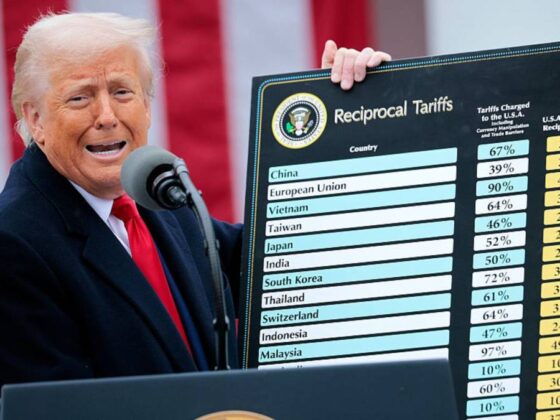00:00:02 Speaker A
Today in Stocks and Translation, we're gonna take a look at how the Dow is actually calculated. Now, the Dow was born all the way back in 1896, nearly 130 years ago, before computers, before calculators, so this index of 30 stocks had to be easy to calculate. And for sake of simplicity, only the stock prices used. So the higher the stock price, the greater the weight in the index. And almost every other index, by the way, like the S&P and the Nasdaq, they use a company's market capitalization, but that gives that requires a lot more paperwork and more calculations. So here's the full method. Basically, you sum the prices of all 30 stocks in the index, and then you divide it by a number called the Dow divisor, which corrects for splits and changes in the components of the stocks. So anytime a stock has a stock split in the index, or when one stock is swapped out for another one, that Dow divisor will change. Now, here is a list of the four top stocks by price. Goldman Sachs is right at the top, with $723.65 as of the close yesterday. Microsoft is number two, Caterpillar is number three, Home Depot is number four. Now, United Health has a stock price of about $267 today, but before, uh, just a few months ago, it topped out at about 600, so it actually would have been number two in this list, had it not seen such a big slide. And I went in, and I calculated what the Dow would look like with different configurations here. So the orange line right here, which terminates last, that is the actual Dow. And then when you take out United Health in ye yellow, you have that line up here. And then I also took out Salesforce, Merck, and then Apple, because those were some of the biggest losers this year by percentage terms. And what you end up with is is a material materially higher Dow price without these big drags in it. And some of them can be actually quite big. And I also did another calculation here. I took, uh, the Dow price-weighted, that's the normal price weighting in white here, and then I also calculated it by market cap, starting at the beginning of the year. And when you do it by market cap, and I'm just gonna kind of trace this out here, we actually saw a lot more volatility by the lows. And again, this just includes all 30 stocks. I'm not taking out United Health or any of them. I'm just doing a different alternate calculation. So more volatility with the market cap weight, uh, version that we saw this year. Now, to sum up all the results, here's the market cap weighted 2025 year-to-date return. That came in at 7.3%. The actual price weighted number that everybody uses is 5.4%, and then the Dow minus United Health, that came in all the way up to 9.3%. And then you can take out Salesforce and Merck, and the numbers keep going up, and by the time you take out Apple, you have a Dow that's up 12.4%, and that's more than double the actual return of 5% and change. So something to think about here, uh, there's no guarantee that the Dow will always be calculated like this, but after 130 years, maybe they're just not gonna change. Tune into Stocks and Translation podcast for more jargon-busting deep dives. New episodes can be found every Tuesday and Thursday on Yahoo Finance's website, or wherever you find your podcasts.











